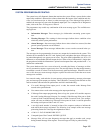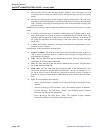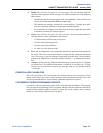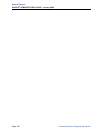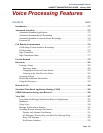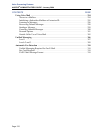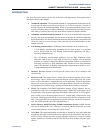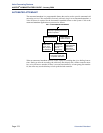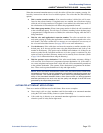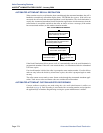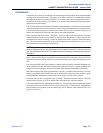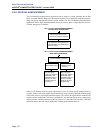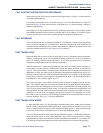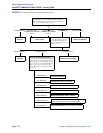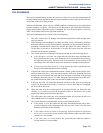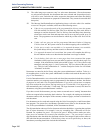
Page 273
Voice Processing Features
AXXESS
®
ADMINISTRATOR’S GUIDE – January 2004
Automated Attendant Applications
When the automated attendant answers a call, the caller will hear the company greeting, fol-
lowed by instructions and the list of available options. The caller then has the following
options:
• Dial a station extension number: If an extension number is dialed, the call is trans-
ferred to the selected station. If ringback tones are enabled, the caller hears ringing
while the call is being transferred. If ringback is not enabled, the caller hears music. If
the called station is forwarded, the call follows the programmed forward.
• Dial a hunt group number: When a hunt group number is dialed, the call is transferred
to the selected hunt group. The call rings or circulates according to how the hunt group
is programmed. If ringback tones are enabled, the caller hears ringing while the call is
being transferred.
• Dial the voice mail application’s extension number: The caller can reach the voice
mail main greeting by dialing the application’s extension number assigned to the voice
mail feature. The caller can then leave a message as a non-subscriber or access any of
the voice mail subscriber features. (See page 286 for voice mail information.)
• Use the directory: If the caller does not know the extension or mailbox number of the
desired party, he or she can spell the name using the dialpad buttons and “look up” the
number in the directory. (This option can be disabled in the database. Or, if there are no
names recorded for the individual mailboxes or for the system’s extension IDs, this
option will not be provided.) Directory names can be sorted by first or last name. (Refer
to page 286 for information about using the directory.)
• Dial the operator access destination: If the caller needs further assistance, dialing 0
will access the Voice Processor’s programmed operator destination. Or, if the caller is
on a rotary telephone and cannot enter a digit, the call will be automatically transferred
to the operator destination. (The operator access destination is programmed in the data-
base. There can be separate destinations for day and night modes.)
NOTE: Due to the natural characteristics of the trunk, the volume level of DTMF tones
transmitted over the trunk may be substantially reduced before reaching the system and
Voice Processor. This natural degradation in tone volume may adversely affect the reli-
ability of the Automated Attendant feature. Other factors which can affect automated
attendant performance are trunk noise and the quality and strength of the DTMF tones
generated by the off-premises phone itself.
AUTOMATED ATTENDANT APPLICATIONS
There are a number of different uses for this feature. Here are two examples:
• Direct ring-in calls to a busy attendant could be forwarded to an automated attendant
(using the Call Forward If Busy feature or system forwarding).
• Calls could ring in directly to an automated attendant application’s extension number
when the system is in day and/or night mode.



